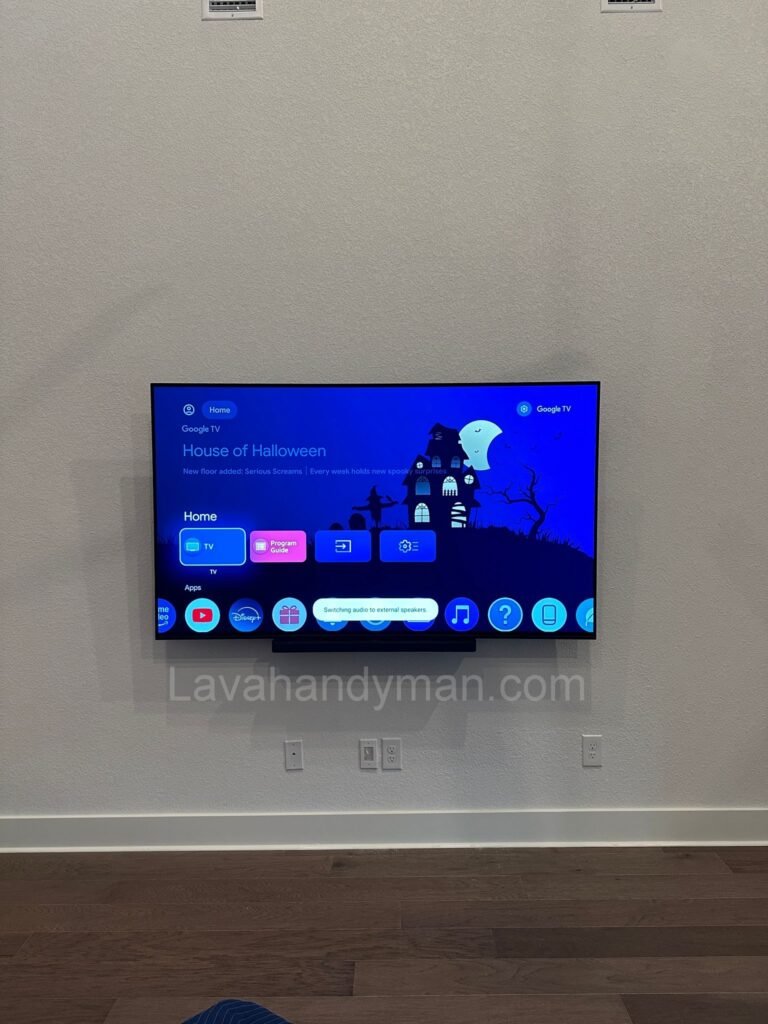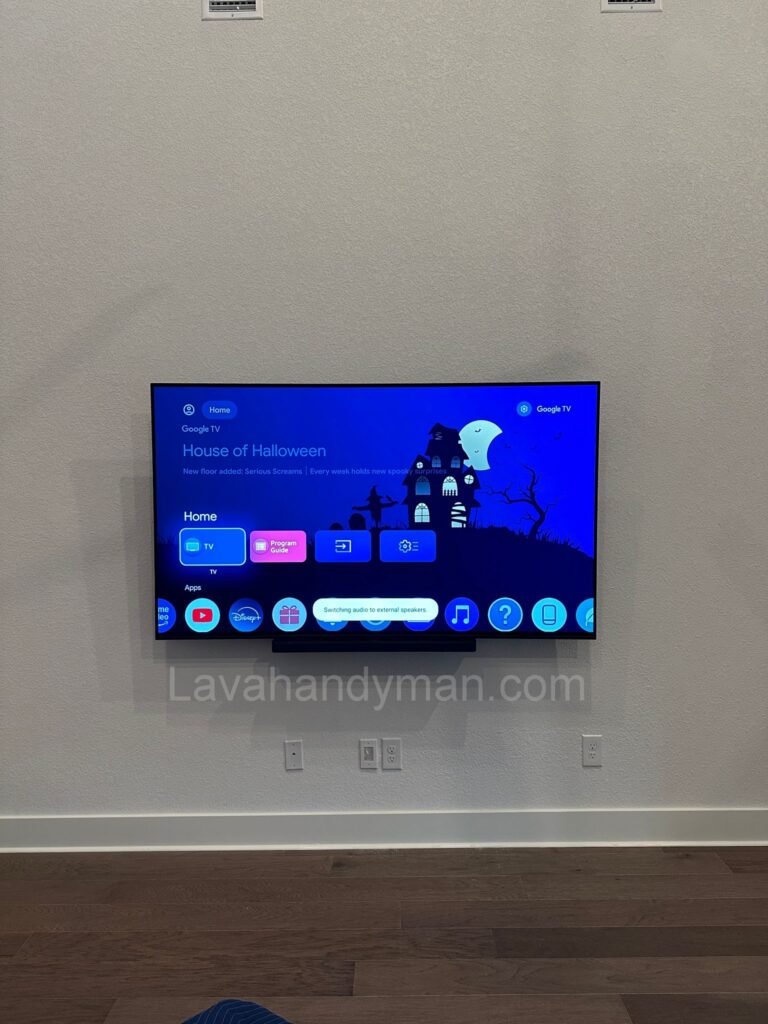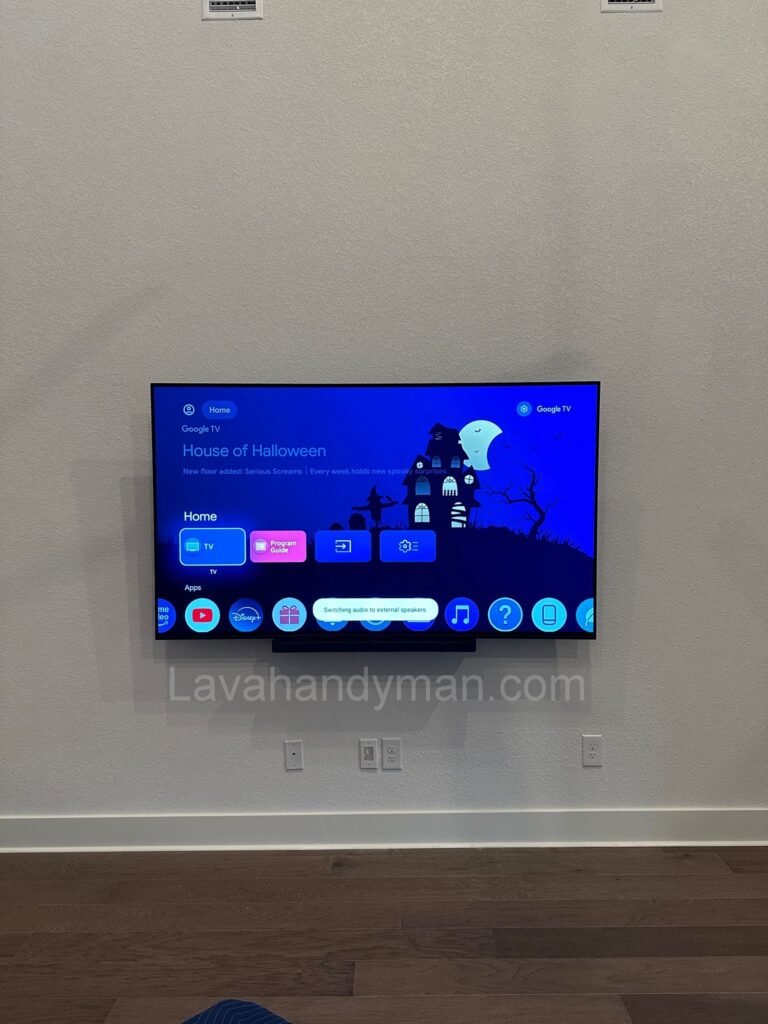🎯 Wall Plug Features for TV Wall Mounting | Complete Guide
Mounting a TV on the wall has become increasingly popular due to its minimal appearance and space-saving benefits. One of the essential components for safe and secure TV wall installation is the wall plug. In this comprehensive guide, we’ll explore the features of wall plugs for mounting a TV, their types, and practical tips for choosing the right one.
📌 What Is a Wall Plug?
A wall plug (also known as a rawlplug or anchor) is a small cylindrical piece, usually made of plastic, nylon, or metal, that acts as an interface between the screw and the wall. It increases the grip and holding strength of screws in solid or hollow walls, preventing damage and slippage.
🔧 Importance of Wall Plugs in TV Wall Mounting
When mounting a TV, strength and safety are top priorities. Using the right wall plug offers several advantages:
- Prevents the TV from falling
- Distributes the weight evenly across the wall surface
- Protects the wall from cracks or breakage
- Enables more precise and professional installation

🧱 Types of Wall Plugs for TV Installation
✅ Plastic (Nylon) Wall Plug
- Suitable for brick, concrete, or plaster walls
- Ideal for lightweight or mid-weight TVs
- Affordable and easy to use
✅ Metal Wall Plug
- Very high mechanical strength
- Best for mounting heavy or large TVs
- Recommended for reinforced concrete walls
✅ Butterfly (Toggle) Wall Plug
- Designed for hollow walls like drywall, gypsum, or hollow blocks
- Expands behind the wall to create a mechanical lock
- Provides extra security in non-load-bearing walls
🛠 Tools Needed for Using Wall Plugs in TV Installation
To install wall plugs properly when mounting your TV, the following tools are recommended:
- Electric drill
- Appropriate drill bits (based on wall type)
- Screwdriver or wrench
- Laser or bubble level
- Pencil or marker for positioning
- Voltage tester to avoid electric wires
⚙️ How to Choose the Right Wall Plug
Here are some key factors to consider when selecting a wall plug for your TV installation:
| Selection Criteria | Explanation |
|---|---|
| Wall Type | Use metal plugs for concrete; butterfly plugs for drywall or hollow walls. |
| TV Weight | Heavier TVs require stronger wall plugs. |
| Screw & Hole Size | The drill hole and screw must match the plug’s size. |
| Installation Environment | For humid or hot areas, choose weather-resistant wall plugs. |
✅ Safety Tips for Using Wall Plugs
- Always wear safety gloves and goggles.
- Mark the mounting location and check it with a level.
- Use the right drill bit to avoid wall damage.
- Make sure the plug is firmly placed and doesn’t rotate.
- Confirm that the TV bracket is stable and secure after installation.
📦 FAQs About Wall Plugs in TV Installation
✔ Which wall plug is best for drywall?
Toggle or butterfly wall plugs are best for drywall, as they expand behind the wall and create a secure mechanical hold.
✔ Are cheap wall plugs reliable?
For lightweight items, yes. But for TVs or heavy loads, use high-quality, branded wall plugs to ensure safety.
✔ How do I know the wall plug is correctly installed?
The plug should be tight and fixed in the wall, with no movement. Screws should hold firm, and the TV bracket should remain level and stable.
🔩 Complete Guide to Metal Wall Plugs for TV Wall Mounting
Metal wall plugs (also known as metal anchors) are among the strongest fasteners used for mounting heavy objects like TVs, cabinets, and industrial equipment to solid walls. In this guide, you’ll learn about the features, types, and proper usage of metal wall plugs specifically for TV wall installation.
📌 What Is a Metal Wall Plug?
A metal wall plug is a fastener made from galvanized steel or aluminum alloys, designed to create a secure bond between the screw and the wall surface. Unlike plastic plugs, metal plugs offer high weight resistance and durability against pressure, heat, moisture, and corrosion — making them ideal for mounting TVs on concrete or brick walls.
🧱 Types of Metal Wall Plugs
✅ 1. Expansion Anchor (Metal Sleeve Plug)
- Function: Expands inside the wall when the screw is tightened, creating a mechanical lock.
- Use: Suitable for solid walls like concrete, brick, and stone.
- Load Capacity: High — ideal for heavy TVs and metal wall brackets.
✅ 2. Molly Bolt / Hollow Wall Anchor
- Function: Expands behind hollow walls (like drywall or gypsum) to form a strong mechanical grip.
- Use: Best for drywall, hollow block, or false ceilings.
- Advantage: Perfect for mounting on non-load-bearing walls.
✅ 3. Chemical Anchor (Resin-Based Metal Anchor)
- Function: Combines a metal rod with epoxy resin for ultra-strong chemical bonding.
- Use: Ideal for reinforced concrete and industrial loads.
- Note: Requires precision tools and experienced handling.
🔧 Common Applications of Metal Wall Plugs
- Wall mounting heavy flat-screen TVs
- Hanging cabinets, closets, or shelves
- Installing metal structures on concrete
- Use in construction and commercial projects
- Securing signboards, outdoor lighting, and air conditioners
✔ Advantages of Metal Wall Plugs vs. Plastic Ones
| Feature | Metal Wall Plug | Plastic Wall Plug |
|---|---|---|
| Load Resistance | Very High | Medium |
| Weather & Heat Durability | Excellent | Low |
| Suitable for Concrete Walls | Yes | Often Weak |
| Use in Heavy Installations | Yes | No |
🛠 How to Install a Metal Wall Plug for a TV
- Drill the correct hole using a hammer drill and a masonry bit.
- Clean the hole to remove any dust or debris.
- Insert the metal plug fully into the hole.
- Use quality screws and tighten with care.
- Check the level and alignment of your TV mount before finalizing.
- Ensure a firm and stable installation with no wobble or movement.

🧠 Frequently Asked Questions (FAQ)
🔸 Is a metal wall plug safe for a 55-inch TV?
Yes. Metal plugs are the most secure option for TVs over 40 inches, especially on brick or concrete walls.
🔸 How do I know the metal plug is installed correctly?
It should feel tight and stable, and the screw should fasten without spinning or pulling out.
🔸 What’s the difference between a metal plug and a chemical anchor?
A chemical anchor uses resin glue for extremely high load-bearing. Metal plugs work with mechanical grip alone and are easier to install.
🦋 What is a Butterfly Wall Plug?
Butterfly wall plugs, also known as Molly bolts, toggle bolts, or anchor butterfly plugs, are among the best tools for mounting equipment on hollow walls such as drywall, plasterboard, or wood panels. In this article, you’ll learn about the types, uses, installation process, and advantages of butterfly wall plugs.
📌 What is a Butterfly Wall Plug?
A butterfly wall plug is a type of mechanical anchor designed for use in thin or hollow walls. It features wings that open up behind the wall, creating a strong mechanical bond between the screw and the wall surface.
🧱 Types of Butterfly Wall Plugs
✅ Metal Butterfly Wall Plug (Molly Bolt)
- Made from steel or durable alloys
- Suitable for mounting small televisions, picture frames, shelves, and medium-weight equipment
- Allows for easy removal and reinstallation of screws without damaging the base
✅ Plastic Butterfly Wall Plug
- Lightweight and cost-effective
- Suitable for lighter items like picture frames or small clocks
- Easy installation with a hand screwdriver
✅ Spring Toggle Bolt
- Features spring-loaded arms that automatically open up behind the wall
- Best choice for false ceilings or thin walls without accessible backing
- High weight tolerance compared to plastic versions
🔧 Applications of Butterfly Wall Plugs
- Mounting small to medium-sized televisions on drywall
- Installing shelves, cabinets, picture frames, and decorative items
- Hanging curtains, chandeliers, and light fixtures
- Ideal for interior decoration, stores, and office setups
✔ Advantages of Using Butterfly Wall Plugs
| Advantage | Description |
|---|---|
| Perfect for Drywall and Plasterboard | No damage to hollow walls |
| Secure and Safe Installation | Wings lock behind the wall, preventing pull-out |
| Reusable | Some models allow you to remove and reinstall screws |
| Available in Various Sizes and Materials | Suitable for both light and medium-weight applications |
🛠 How to Install a Butterfly Wall Plug
- Drill a hole using a suitable drill bit for drywall
- Insert the butterfly plug into the hole
- Open the wings or let the spring mechanism open them automatically behind the wall
- Tighten the screw until the plug is securely locked in place
- Check the installation’s stability and ensure the item is level
🎯 SEO Tip: Using phrases like “installing butterfly wall plug on drywall,” “Molly bolt for plasterboard,” and “how to use toggle bolts” will help improve the article’s visibility in search engine results.
❓ Frequently Asked Questions
📌 Is a butterfly wall plug suitable for mounting a television?
Yes, if the wall is drywall and the television is not too heavy (up to 30 kg), the metal butterfly plug is a great choice.
📌 What is the difference between a butterfly wall plug and a metal wall plug?
Metal wall plugs are intended for use on concrete or brick walls, while butterfly plugs are designed for hollow walls like drywall.
📌 Which is better, plastic or metal butterfly plugs?
For light items, plastic is sufficient. However, for professional and secure installations, metal butterfly plugs are recommended.
What is a Plastic (Nylon) Wall Plug?
A plastic wall plug, also known as a nylon wall plug, is one of the most commonly used tools for mounting various items on walls, especially drywall, cement, and plasterboard. This type of wall plug, due to its simple design and quick installation, is ideal for mounting lightweight items such as pictures, shelves, mirrors, and other decorative objects. In this article, we will explore the features, types, applications, and benefits of using plastic wall plugs.
📌 What is a Plastic (Nylon) Wall Plug?
A plastic wall plug is a mounting tool designed to secure screws into hollow or soft walls such as drywall, cement, or plasterboard. Made from durable plastic materials like nylon or polyethylene, this type of wall plug is highly effective and practical for mounting lightweight items.
🔧 Types of Plastic (Nylon) Wall Plugs
✅ Standard Plastic Wall Plugs
These are typically used for securing small to medium screws on regular walls. They are available in various sizes and are commonly found in most hardware stores.
✅ Nylon Wall Plugs for Drywall (Plasterboard)
This model of wall plug is specially designed for use with drywall or plasterboard. Due to their unique structure, these plugs perform well on thin and hollow walls.
✅ Plastic Wall Plugs with Nylon Tail
This type of wall plug has a nylon tail that is ideal for mounting screws deeper into the wall. It helps to keep the screw firmly in place and provides additional stability.
✔ Features of Plastic (Nylon) Wall Plugs
- Cost-Effective: Plastic wall plugs are more affordable than metal versions, making them a great choice for economical installations.
- Easy and Quick Installation: These wall plugs can be easily installed using a screwdriver or drill, saving time and effort.
- Lightweight and Durable: Ideal for mounting lightweight items like pictures, clocks, or small shelves.
- Suitable for Drywall and Cement Walls: They work best on drywall, cement, and plasterboard, providing a secure hold without damaging the wall.
🛠 How to Install a Plastic (Nylon) Wall Plug
- Choose the Right Size: Select a wall plug that matches the size of your screw and the type of wall.
- Drill a Hole: Use a drill to create a hole in the wall that matches the size of the wall plug. The hole should be deeper than the length of the plug.
- Insert the Wall Plug: Place the wall plug into the hole and press it until it fits securely in place.
- Insert the Screw: Place the screw into the plug and tighten it using a screwdriver or drill.
- Check Stability: After installation, ensure the screw is tight and the plug is firmly fixed to the wall.
⚖ Advantages and Disadvantages of Plastic (Nylon) Wall Plugs
| Advantages | Disadvantages |
|---|---|
| Affordable and cost-effective | Not suitable for mounting heavy items |
| Quick and easy installation | Can be damaged under excessive impact or pressure |
| Suitable for drywall and cement walls | Limited weight tolerance |
| Simple to use without complex tools | Not ideal for concrete or brick walls |
📝 Conclusion
Using the right wall plug for TV wall mounting ensures safety, durability, and a neat appearance. Choosing the correct plug, knowing your wall type, and using the proper tools are all key to a professional result.
If you plan to mount your TV on the wall, follow this guide to achieve a safe, sleek, and long-lasting installation.
At LavaHandyman.com, we don’t just help you understand TV tech — we also offer expert TV installation services, making sure your home entertainment setup looks and performs at its best.
📞 Need Help?
Let us take care of the hard work while you sit back and relax.
📍 Serving: Austin, Round Rock, Cedar Park & more
📱 Call or Text: (737) 420-6992
🌐 Visit: https://lavahandyman.com


